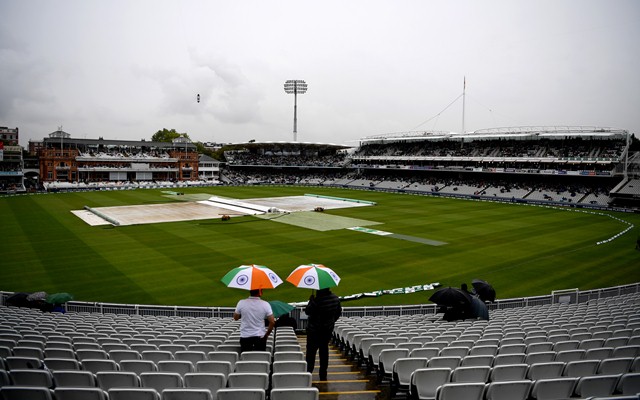Steven Stern, the custodian of the DLS system and his journey
Professor Steven Stern is a sports nut with a head for data, numbers, and trends.
2 Min Read


He’s a Stanford-educated mathematician with a love of sports and computer programming. He’s also a custodian of the controversial Duckworth Lewis Stern system for rain-affected cricket matches. Meet Bond University Professor of Data Science, Steven Stern. Professor Stern is a sports nut with a head for data, numbers, and trends.
But it was an act of chance that unknowingly set him on the road to take on one of the most contentious roles in world sport, as custodian of cricket’s controversial Duckworth Lewis Stern (DLS) system for rain-affected matches. The California native moved to Australia in 1994, being offered a job the day after being interviewed for a role at the University of Chicago. Tossing up between summer down under or winter in the American Midwest, Stern elected to head south.
Stern’s friends in Australia wanted to know how cricket’s rain rule worked, so naturally, they turned to the new guy who taught maths and data analytics.
“That was the one rule my friends knew nothing about, and they figured ‘you should figure it out for us, because we want to know about it, and no-one seems to know anything about it’. Obviously, cricket is so mathematical, it drew me in any way. My understanding now is that you bring over an American and you try and show him this sport that no-one can ever possibly figure out,” Stern says.
Professor of Data Science
Now a Professor of Data Science at Gold Coast’s Bond University, Stern has officially been the custodian of the Duckworth Lewis Stern system since 2013, the year before his name was formally added to the system’s title.
However, Stern’s connection with cricket’s arcane rain laws goes as far back as 2005, after he read the first paper Professors Frank Duckworth and Tony Lewis ever wrote on their system, examining the published tables and scenarios, and figuring out the pair’s method.
After writing his own paper on the potential use of extra information not considered in the original Duckworth Lewis model, Stern decided to send his findings to the pair, as a courtesy.
Both professors responded to Stern’s emails, keen to discuss the mechanics of their system and his findings. It marked the start of what would prove to be a long and fruitful partnership.
The relationship was sealed when Stern offered to code a new computer programme to allow Duckworth and Lewis to continue to calculate cricket targets using their system, while the world’s computers moved from DOS to Windows.
“I told them, you can have it, I want to be a part of this…even to this day, people always say ‘why don’t you make a little smartphone app, all you need to do is charge 50 cents and there’s a billion Indians who would pay 50 cents apiece for it’ – which is possibly true.”

Stern the new custodian of the system
When Duckworth and Lewis retired in 2013, they recommended to the International Cricket Council (ICC) that Stern take over as custodian of the system.
While the DLS system has attracted its share of controversy over the years, Stern describes the concept as “easy”.
“The concept is easy. The details are incredibly complicated, but you don’t have to understand the details to understand the idea, you drive your car to work every day without understanding the physics of how the engine works.
“In a nutshell, DLS says that the way a team scores its runs during its allotment of overs goes in a steadily accelerating pattern, as you get closer to the end, you score at a higher rate, because you have less fear of losing your wickets. What that means is, at the end of all these innings, what we can do is, we can actually do analysis which says, ‘if you tell me whatever over you’re interested in as a starting point, and whatever over you’re interested in as an ending point, and you tell me how many wickets you had at that starting point, I can tell you what proportion of your total runs you would expect to score in that time frame.”
Stern reviews the DLS system annually, using data from every international match from the past four years, and checking for any changes to the way cricket is being played that might require the system to be tweaked. He normally releases a new version of the DLS system every couple of years.
Inevitably, high-profile cricket matches whose outcomes have been influenced by the DLS system have attracted comments and criticism from high-profile figures in the international game. However, it was a domestic one-day match in Australia that led to Stern being contacted by one of the greats of the game, former Australian captain Greg Chappell.
Chappell had been coaching one of the teams playing in a rain-affected match at North Sydney Oval. Unimpressed by the target set for his team’s opponents using the DLS system, Chappell eventually contacted Stern to outline his concerns.
“I’m not sure that we ever got to a point where I convinced him,” Stern says. “It’s not true, but I get the impression there are people out there who think I don’t think about this sort of stuff, that I’m just a soulless mathematician who just crunches the numbers and puts them out there and that’s all, no feel for the game.”
But it’s not just world-famous cricketers that contact Stern with his views. One regular correspondent uses numerology to try to debunk the global system, while another cricket fan from India is so incensed over what he sees as flaws with DLS, he’s taken to regularly writing to the ICC, promoting the merits of his own system.
The interruptions don’t just come from weather, either. While rain delays are the most common, Stern recalls floodlight failures, glare on the pitch, political protests, and most famously, a swarm of flying ants, as all leading to the DLS being called into play.
Years after taking over the DLS system, cricket remains a massive part of Stern’s life. While these days he’s more likely to be found watching his teenage son play games across southern Queensland than in the stands at the Gabba, he’s lost count of the number of televised matches he’s sat through, describing it as “more than my wife would’ve liked.”
“When my son was born, he was born in November 2000, and that was an Ashes in England tour. If he rolled over and started crying in the middle of the night, I was like ‘don’t worry dear, I’ll look after him’, and I’d go and sit up and watch the Ashes. So . . . I’ve watched a lot of cricket.”
As part of his custodian role, Stern is on speed-dial to the ICC, the sport’s governing body. He describes the traditionally stuffy organisation as “a little bit reactive.”
“They’re very happy not to worry about anything as long as things are flowing smoothly, then when something happens, when there’s an uproar, they’re on the email to me within a day or so.”
Stern’s resigned to the fact there will always be uproars, as long as cricket retains its passionate base of supporters. But he remains philosophical about those people who criticise the method that carries his name.
“People tell me, ‘your method ruined this game’. And my response is, ‘no, the rain ruined the game’. DLS is designed to save some matches that would’ve been ruined from the rain. You can’t save all matches from rain, some matches are just ruined. And it’s not the rain rule’s fault they got ruined, it’s the rain’s fault they got ruined.”
~ Written by Reon Suddaby
A journalist at Bond University on the Gold Coast in Australia.
Get the latest Cricket News and updates from India vs West Indies series, Match Predictions, Fantasy Cricket Tips and lots more on CricTracker.com.
Download Our App